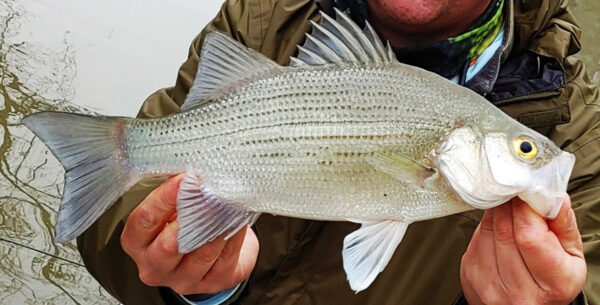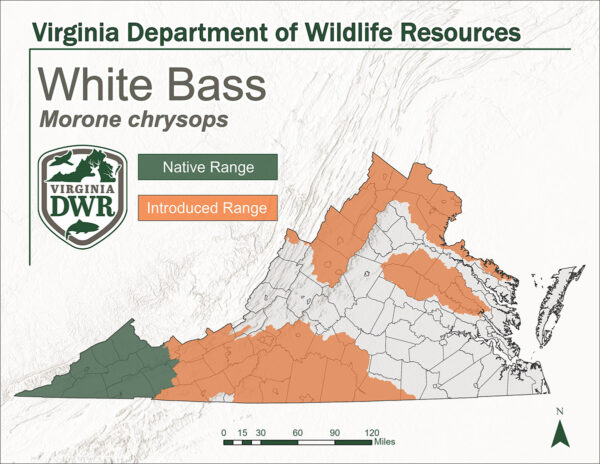An angler displays a White Bass. Photo by ©Tim Aldridge
Virginia Master Angler Andy Bagwell with a trophy White Bass.
Fact File
Scientific Name: Morone chrysops
Classification: Fish, Order Perciformes, Family Moronidae
Size: White Bass in Virginia typically grow to about 12 inches in length
Life Span: White Bass typically live for about 4 years in Virginia
Identifying Characteristics

A trophy White Bass. Photo by ©Andy Bagwell
- Deep bodied with faint to fading lateral stripes
- Tooth patches on the tongue
- Two disconnected dorsal fins
- First dorsal is spiny
- Second dorsal has one spin
- Prominently arched dorsum
- Forked caudal fin
Distribution
White Bass are native to the Upper Tennessee River basins in southwest Virginia. White Bass were previously introduced into several reservoirs throughout the state, and in some cases these introductions have resulted in established populations within those watersheds.

Diet
White Bass are highly piscivorous and commonly prey on species such as Gizzard Shad, Threadfin Herring, and other readily available forage species.
Habitat
White Bass are pelagic, preferring to inhabit the open waters of larger streams, rivers, and reservoirs.
Last updated: March 18, 2025
The Virginia Department of Wildlife Resources Species Profile Database serves as a repository of information for Virginia’s fish and wildlife species. The database is managed and curated by the Wildlife Information and Environmental Services (WIES) program. Species profile data, distribution information, and photography is generated by the Virginia Department of Wildlife Resources, State and Federal agencies, Collection Permittees, and other trusted partners. This product is not suitable for legal, engineering, or surveying use. The Virginia Department of Wildlife Resources does not accept responsibility for any missing data, inaccuracies, or other errors which may exist. In accordance with the terms of service for this product, you agree to this disclaimer.

